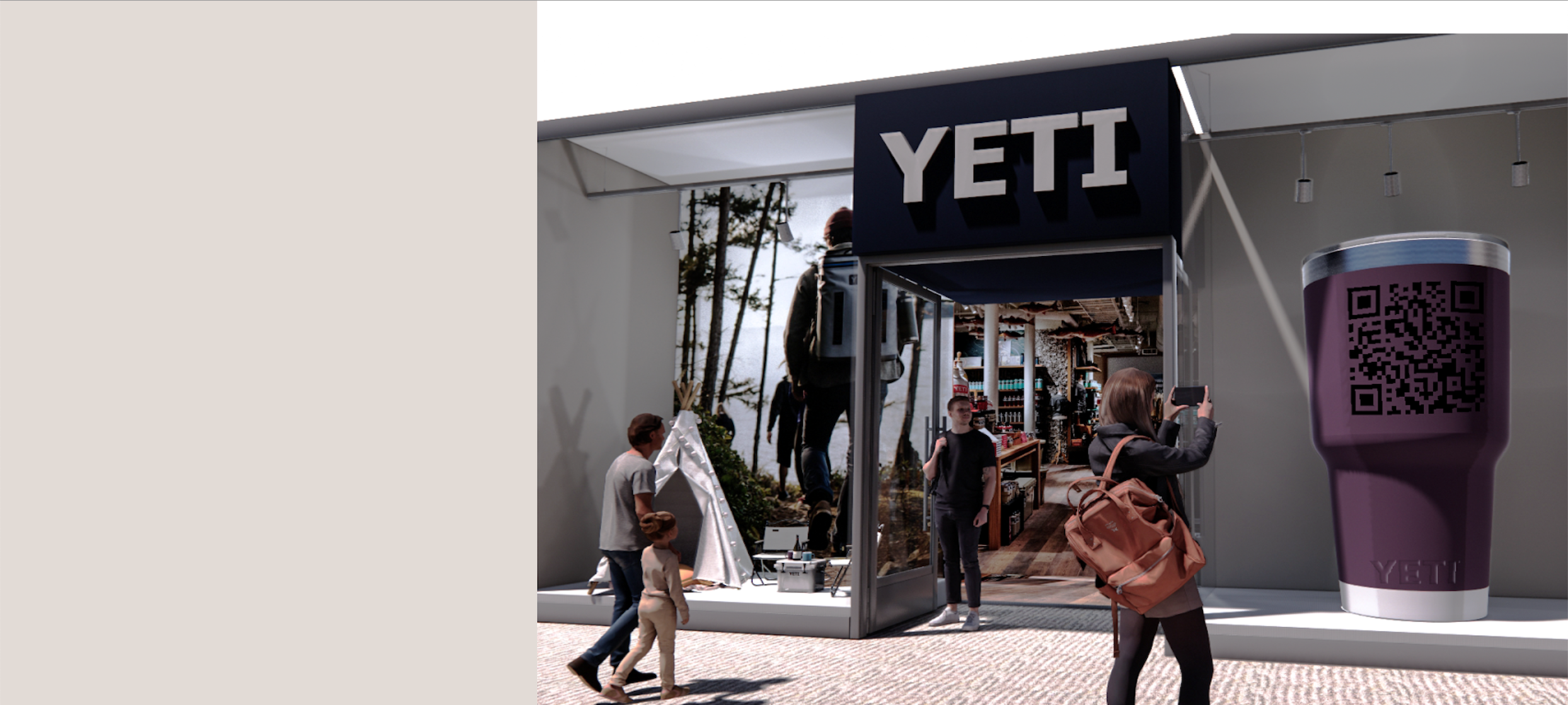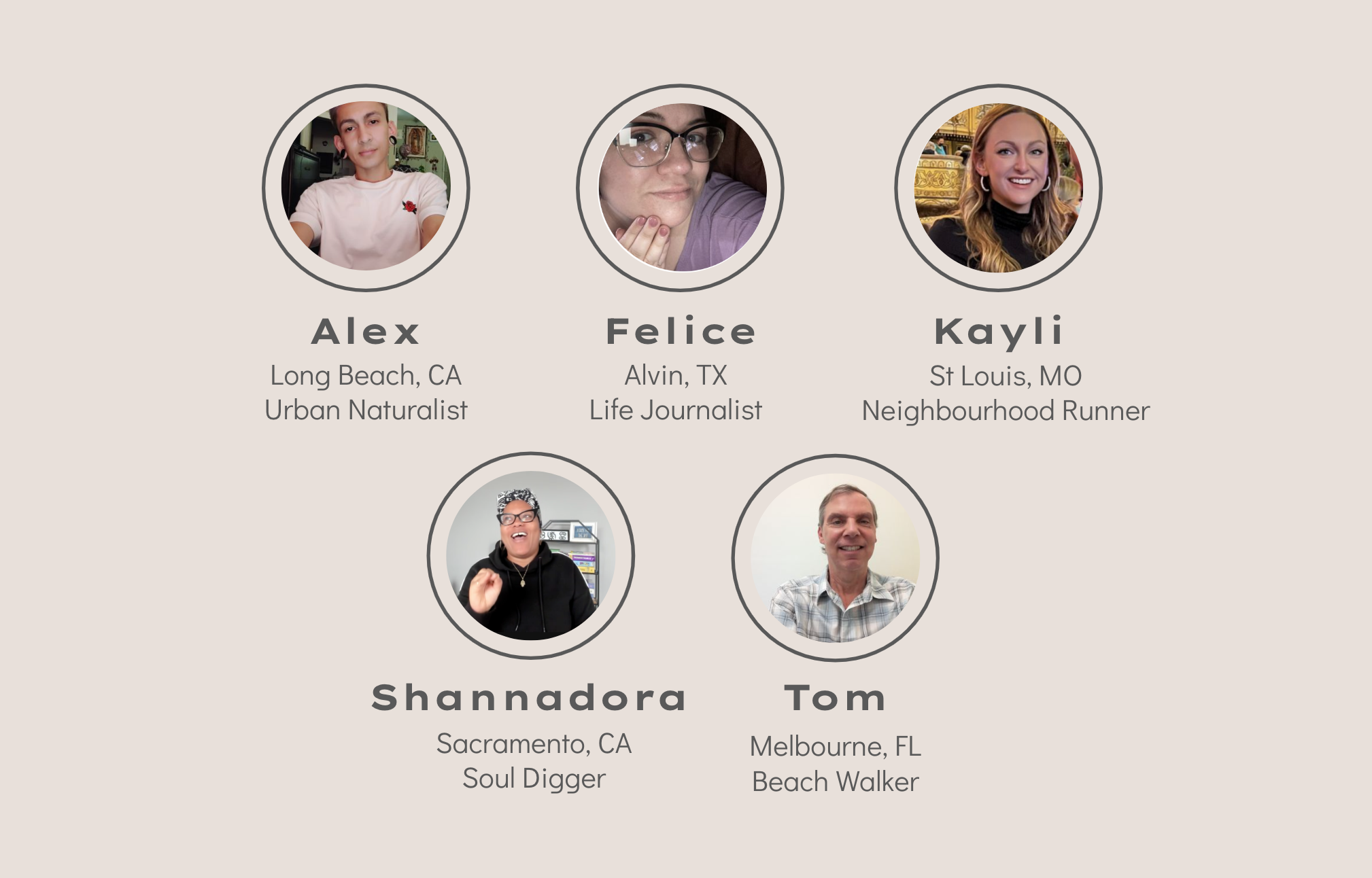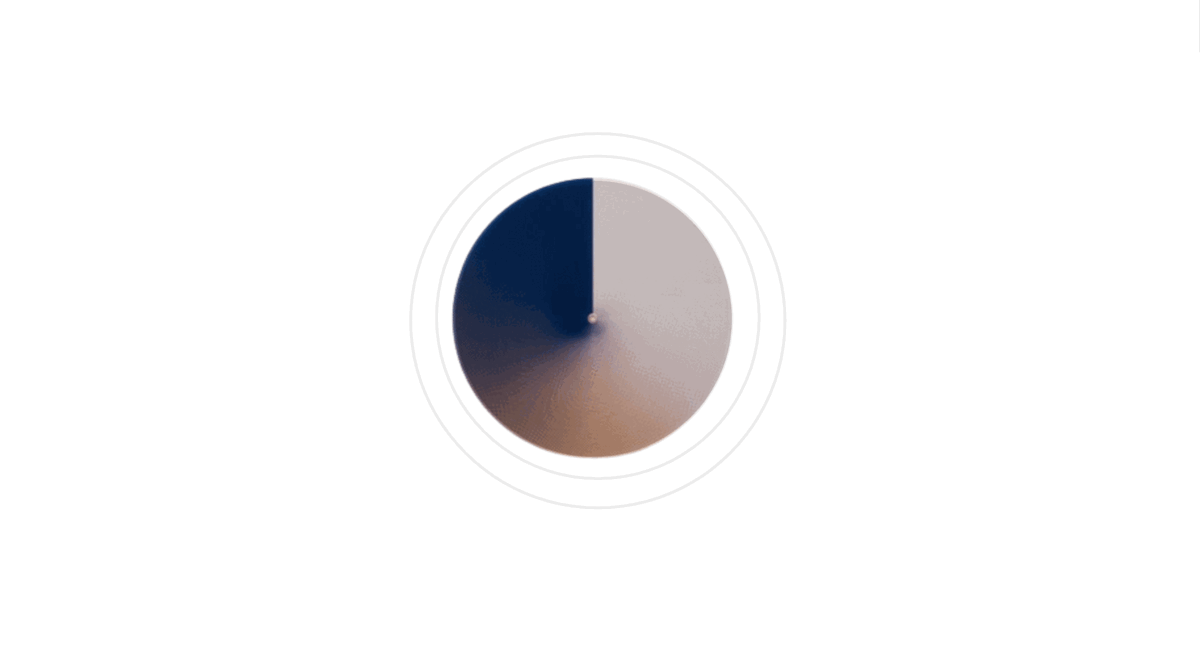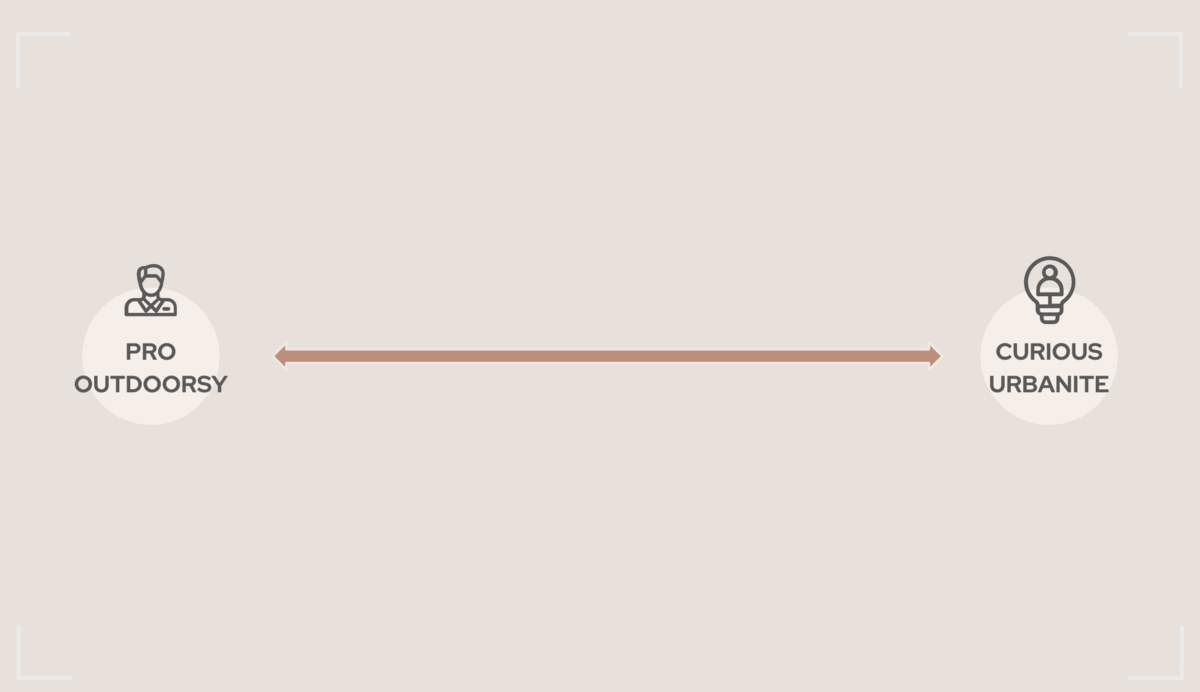
YETI
Wild
bringing immersive experiences to the YETI brand
——
Project Type
experience design
design strategy
Skills
problem framing
secondary research
recruiting surveys
user interviews
research exercise design
research synthesis
brainstorming
design requirements
prototyping: storyboards
concept iteration
storytelling
roadmap
business canvas
concept pitch
Role
design research lead
synthesis lead
brainstorm co-lead
pitch visual design co-lead
pitch story design lead
The Challenge
The world is becoming noisy—and increasingly digital. Companies are being tasked with evolving more rapidly and in a greater variety of ways than ever before. The emergence of major technological shifts like the web 2.0 and the metaverse has accelerated this pace even further.
Brands are beginning to rethink how they want to show up in the world. How can they evolve in ways that keep up the pace while remaining authentic and compelling? Within this dynamic context, my team of four was tasked with reimagining how YETI could engage consumers in ways that are more immersive and compelling.
Merging a changing technological landscape with a premier outdoor products company, my team and I took on a process of research, synthesis, ideation, concept drill downs, business modeling, and a final concept pitch. The result?
An immersive QR-enabled journey that unveils new outdoor products & experiences through showcasing local escapes and capturing your memories
Recognizing that the world is noisy for consumers too, our concept emphasized meeting consumers in their routines in surprising ways—like this QR code discovery during a morning coffee run.
The Process
To begin to better understand the context and get a feel for the YETI brand, we immersed ourselves in a secondary research canvas—paying careful attention to social trends/drivers, the state of the economy, and current & emerging tech enablers.
After familiarizing ourselves with the societal context and YETI as a company, we centered on a primary business goal for YETI: enhancing its product discovery and retail space. Phrased as a question, our overarching goal became:
How might YETI enhance its product discovery and retail space through immersive experiences?
Using the high-level outdoor trends we had uncovered as a foundation, we dug deeper into YETI as a brand. What was YETI’s current mission, vision, and brand identity? To get a better understanding, we stepped into the shoes of a consumer through an in-store immersion.
While in store, we paid careful attention to product interactions, brand storytelling, and the current customer experience.
We left the in-store immersion with a better understanding of YETI’s mission, vision, and value proposition.
But how did YETI’s current strategy connect with people’s lived relationship with the outdoors? What was the actual experience of discovering and purchasing a YETI product really like? We conducted primary research interviews with five individuals across diverse outdoors interests, brand preferences, and geographies to find out.
A snapshot of the humans that inspired our design. In their own ways, each of them saw the outdoors as an escape.
We heard all sorts of things about people’s relationships with the outdoors as well as their perception of YETI. Taking lead on making sense of what we heard, I guided my team through a synthesis session. We summarized our findings into a variety of themes, insights, and frameworks.
The synthesis summary board we completed for a mid-project check in.
Evolving throughout the course of our project, our insights ultimately boiled down to four key insights that all centered around a central element of time. With pandemic memories of being cooped up inside, we heard people talk about cherishing and prioritizing time spent outdoors.
Whether setting aside time to reconnect with self through nature, building that time spent outdoors into daily routines, or making precious memories with loved ones, our interviewees showed us that they were spending time outdoors regularly and locally.
Each of our insights revolved around the concept of time, including moving YETI from where it is today to the YETI of tomorrow …
These key insights guided our brainstorming and ideation. Using several how might wes inspired by our insights, we conducted a number of ideation sessions as a team. With a dizzying number of design ideas and concepts, we took a step back in order to refine our final direction.
The controlled chaos of a team ideation session.
Zooming back out to emerging technology/societal trends, YETI’s brand mission and vision, and our most compelling insights, we realized that YETI’s current positioning didn’t match people’s current perceptions or evolving behavior.
We had spotted an opportunity area: shifting YETI from their current focus area on professional outdoorsmen for extreme environments to a focus on the outdoors-curious in more everyday, local environments.
Shifting to a new audience would allow YETI to connect to current behaviors and expand its customer base.
With a refined focus, we narrowed our final concept direction—honing in on principles that would be resonant with people’s current behaviors. We aimed to meet people in their busy routines, tie the experience to their memories, and connect them to products and the outdoors.
The team during a concept drill down session.
Turning to feasibility and viability, we completed a business model canvas further iterating our concept in a way that fit YETI’s strengths/competencies and technological capabilities.
Tying desirability to feasibility and viability.
With our concept – “Everyday is Wild” – in hand, I led the team in storyboarding our overall project narrative for the final concept pitch.
Ideating how to tell the project story to our audience.
Giving life to our final concept through visuals, a team member and I brainstormed illustrations for the customer journey: here’s an overview. Our consumer archetype happens upon the YETI brand at his local coffee shop and begins his QR-facilitated journey.
Scanning a QR code on his coffee cup, he sees a video of an outdoor activity at a nearby local park facilitated by YETI products. Making plans to explore that park soon, he discovers that he can “collect” other YETI local escape videos at nearby locations.
By collecting 5 videos, he qualifies for a free YETI tumbler customization. To claim his tumbler, he arrives at the YETI store. He discovers a variety of immersive experiences including an AR window display that showcases a moving “digital person” interacting with a YETI product camping scene as well as a giant tumbler with an interactive QR code that displays the engraving customization
.
The tumbler customization captures a memory for him, and he’s excited to try it out! He submits a handwritten “love you mom” and a photo of a treasured outdoor memory he made with her. Receiving his tumbler on the spot, it features an engraving of his handwriting and a QR code.
Whenever someone scans the QR code on the tumblr, the photograph of them appears—encapsulating their memory together as the perfect Mother’s Day gift. He’s impressed by the thoughtfulness and quality of the product and plans to try out more YETI products for his next outdoor outing.
The Result
Prepared with our concept, visualizations, slide deck, and a few rounds of practice, we presented to our advisors and classmates—telling the story of how we reimagined enhancing YETI’s product discovery and retail space through immersive experiences. By connecting to everyday routines, local escapes, and consumer memories we draw users into product discovery and make the store visit one to remember!
Having taken the lead on secondary research, primary research, synthesis, and slide deck narrative design, I combined my learnings with the team’s to hand over a number of deliverables including: a secondary research canvas, discussion guide, interview summary, synthesis summary, ideation storyboards, concept drill downs, business model canvas, and final slides.
We reflected on our learnings and ultimately received positive feedback on our engagement in the learning journey, synthesis storytelling, and bias toward action.
lessons
Design strategy is an end to end connecting of dots that takes practice.
Make a point to shut off the screens and spend time being outdoors!
Prioritize needs to find uses for tech—not the other way around.
















